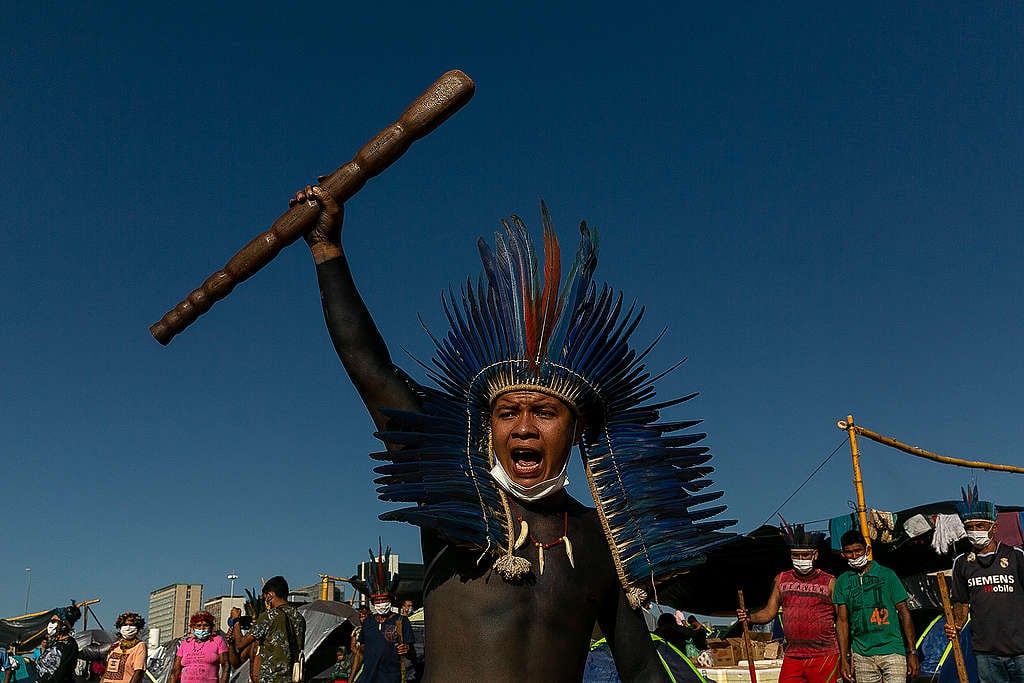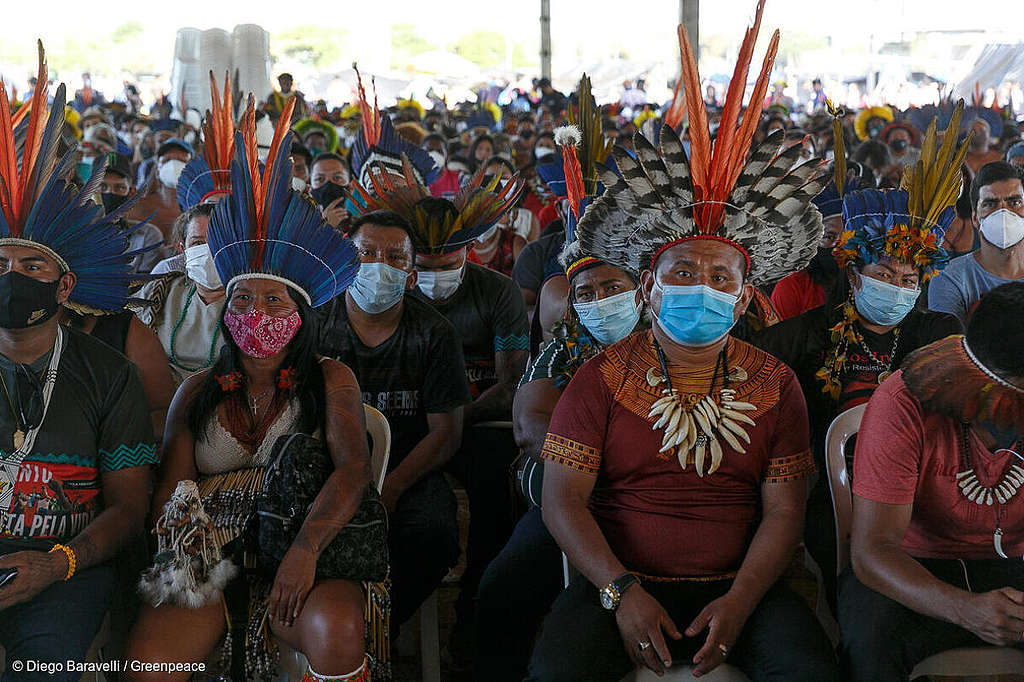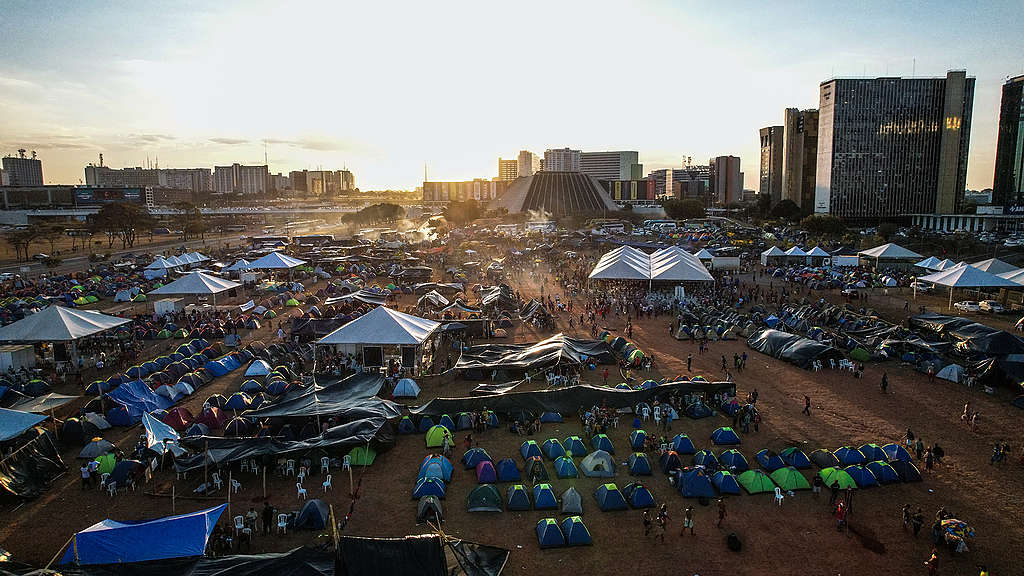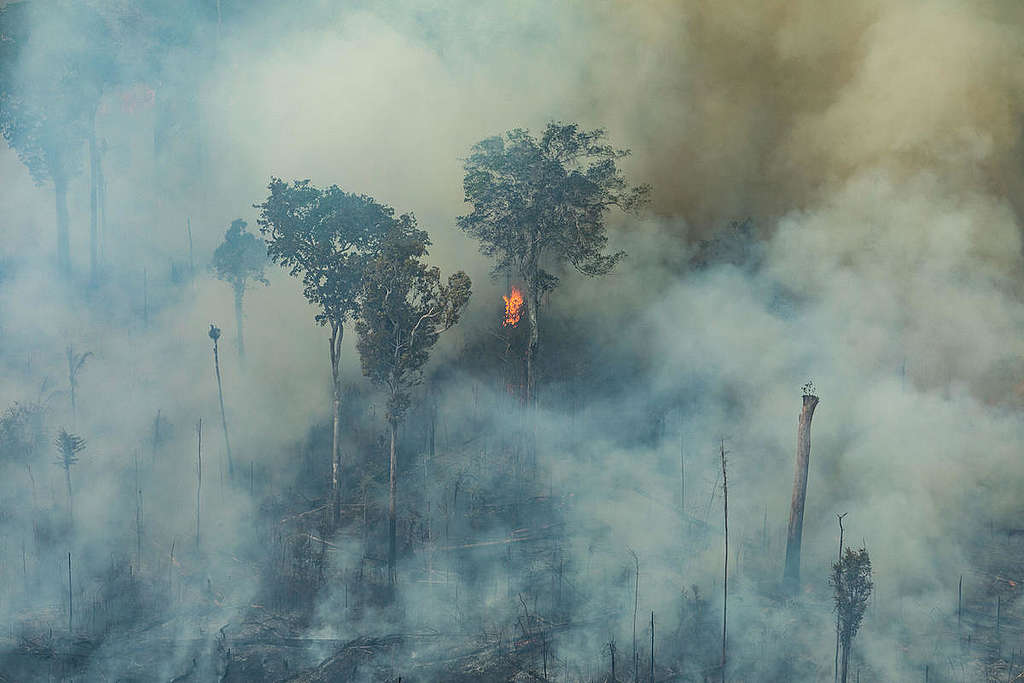The “Fight for Life” (“Luta pela vida”) Camp has brought together up to 6,000 Indigenous leaders and activists from all regions of the country to protest the government’s anti-Indigenous policies and rollbacks on protections for their lands and lives.
Ipê square in Brasília is currently the biggest Indigenous village in Brazil. And it’s the largest Indigenous demonstration in Brazil’s history.
What are they protesting?
The current Brazilian government has an explicitly anti-Indigenous agenda, abandoning Indigenous communities as they face invasions from land grabbers, miners, and loggers.
This week is critical because the Brazilian Supreme Court will rule on a legal case that could severely limit Indigenous land rights. The UN Special Rapporteur on the rights of indigenous peoples has said that this case could legitimise violence against Indigenous Peoples and inflame conflicts in the Amazon rainforest and other areas.
This case comes at a time when the Brazilian Congress is advancing laws that would reward land grabbing, end environmental licensing, open Indigenous Peoples’ lands to mining, and reduce the size of protected Indigenous Peoples’ lands.
These laws are being pushed by industrial agriculture and other sectors like mining, interested in removing Indigenous Peoples from their land to set up plantations and mines.
All of these legal changes would cause particular harm to the 115 officially-recognised uncontacted, isolated Indigenous Peoples of Brazil, breaking the protective policy of non-contact with them.

Why are the legal changes so unfair on Brazil’s Indigenous Peoples?
Indigenous Peoples’ human rights and lands are protected under the 1988 Brazilian Constitution. This means that the Brazilian government must ensure these lands are recognised and protected. Despite this, hundreds of Indigenous Lands have not even been officially recognised by the government.
Now, the far-right industrial agriculture lobby in Brazil is trying to use legal manoeuvring in the courts to outright erase the Indigenous land rights outlined in the Constitution.
Even though Indigenous Peoples have occupied these lands since time immemorial, agribusiness interests are trying to draw up an arbitrary rule that Indigenous land claims are only valid if communities were occupying the lands when the 1988 Constitution came into force.
Such a ruling would dismiss the entire history of displacement resulting from violence against Brazilian Indigenous Peoples by state authorities over the last four centuries – murders, massacres, genocides, forced removals from their traditional occupied land or even the intentional spread of disease.

Why does the Indigenous ‘Fight for Life’ protest matter to anyone outside Brazil?
The human rights and environmental crises in Brazil are interlinked as their rights are being attacked in order to clear the way for more forest destruction. For landgrabbers, and the mining and agribusiness sectors, they see Indigenous Peoples’ rights as an obstacle to endless expansion.
Indigenous Peoples, especially in the Amazon and other Brazilian forests and wetlands, are on the frontlines of the fight against irreversible climate change. The UN estimates that the land that Indigenous Peoples live on is home to 80% of the world’s remaining biodiversity – carbon-absorbing biodiversity that is crucial in the global fight against climate change.
If Indigenous lands in the Amazon are opened up for large scale industrial farming and mining, the rest of the world will struggle to bring climate change under control.
Amidst the “code red” climate emergency, the world cannot afford to lose the Amazon, which helps absorb carbon dioxide from the atmosphere.


Add your name to tell the Brazilian government to save the Amazon Rainforest and protect the lands of Indigenous and traditional communities.
Take Action


